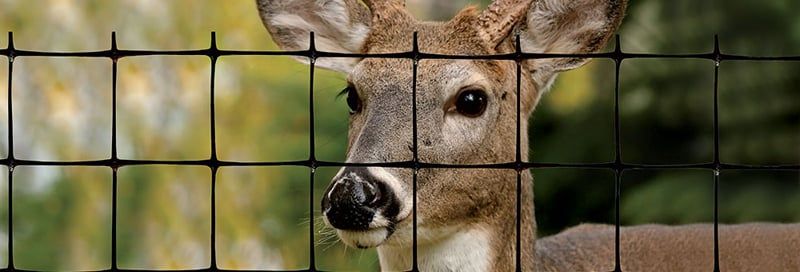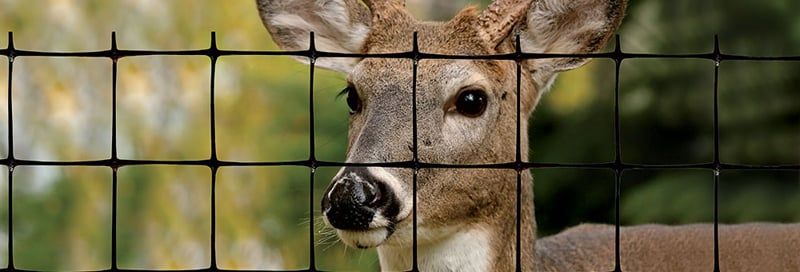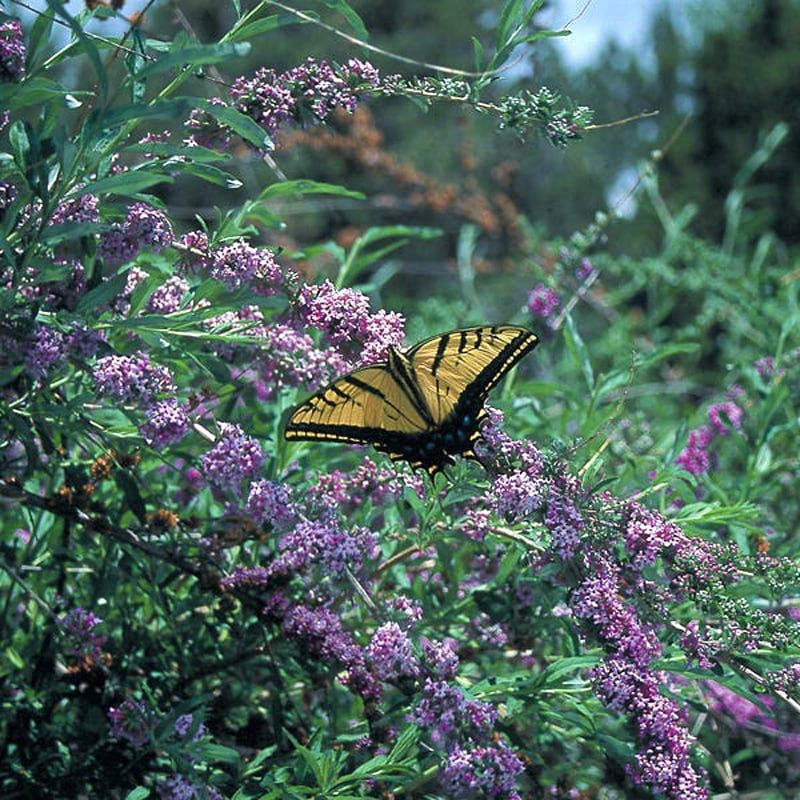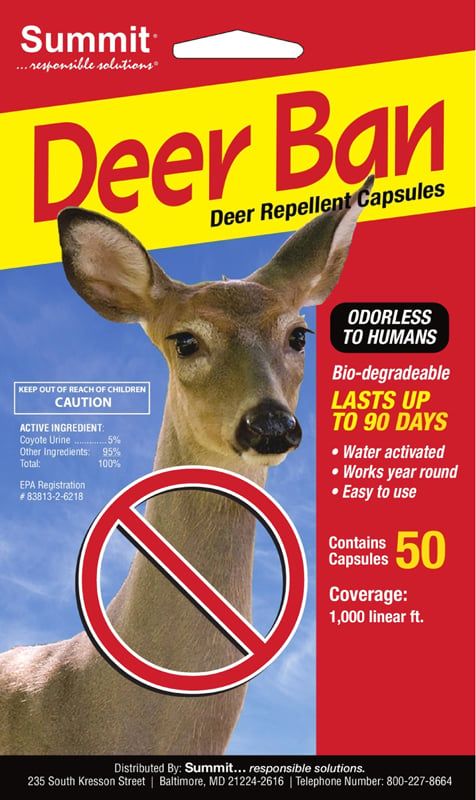When Bambi’s Not Your Buddy


How to keep deer from eating your landscape plants
Deer might be the most destructive form of wildlife to visit a garden or homestead. These large mammals can eat a lot of carefully cultivated plants in a very short period of time.

When a hungry deer starts feasting on your garden, your crops, or the fruit on your trees, havoc results. A typical whitetail deer eats 6 to 8 percent of its body weight in green foliage every day. For a deer that weighs 150 pounds, that’s 9 to 12 pounds of food daily.
The best deer control often involves using several strategies and more than one deer control method.
Deer-resistant plants
Choosing deer-resistant plants for your ornamental gardens is one sure way to reduce browsing. Selecting plants that deer simply do not like to eat is a good place to start. According to Ruth Rogers Clausen, author of 50 Beautiful Deer-Resistant Plants, there are many beautiful landscape plants that deer do not like to eat because of their aromatic or fuzzy leaves, rough textures or unpalatable taste.
Butterfly Bush (Buddleia species) is a beautiful flowering shrub that attracts bees and butterflies with its prolific flowers…and deer don’t like it at all. Russian Sage is another flowering perennial that looks great in a garden that deer will avoid. Even peonies, with their stunning large flowers, are seldom browsed by deer.

Junipers repel deer because these evergreen shrubs have volatile oils in their needles. Boxwoods are prized for their consistent evergreen foliage, but deer don’t care for the scent and leave it alone. Experts are unsure why deer don’t like spirea bushes, but these cold-hardy flowering shrubs are a great choice.
Many smaller flowering perennials are also shunned by deer. The bright red flowers of Furman’s Red Texas Sage look great in a garden. The strong fragrance of Ava’s Humingbird Mint keeps browsing deer away.

Deer are also likely to avoid the bright yellow flowers of Moonshine Yarrow, the fuzzy Lamb’s Ears leaves and the lavender flowers of Raydon’s Favorite Aromatic Aster. All of these perennials are available from HighCountryGardens.com.
Dependable deer fencing
You’d think a sturdy fence is all you need, but a cute, four-foot-tall split rail fence is not going to get the job done. Deer are known for their impressive leaping abilities, so an effective deer fence should be seven feet tall—or even higher.
Fences, however, can block views and be ugly to look at. The modern solution to the unattractive deer fence is a high-strength plastic net fence that is tall enough to keep deer out but almost invisible from a distance. Tenax net fencing has a breaking load of 650 pounds (to keep large animals from charging through) and a life expectancy of 10-15 years. The plastic mesh is 7.5 feet tall, and it comes in rolls of 100 feet that sell for about $150 in hardware stores.
Complete fence kits are available that include everything you need to erect a dependable fence around a garden or property. The kits include rolls of fencing material, heavy-duty posts, ties and stakes.
Deer repellents
Can you actually repel deer with an unpleasant taste or smell? A wide variety of odors and ingredients are used, including rotten eggs, dried blood, hot pepper concentrate, and wintergreen oil. Many different repellents claim to be effective, but sometimes these products need to be applied often because they can literally be washed away by a heavy rain.
A new generation of deer repellents uses the scent of predator urine to trick deer into believing that a dangerous predator is nearby.
Quite simply, if animals think something could eat them, they will stay away.

Summit Deer Ban capsules contain predator urine that triggers a deer’s instinctive response to flee from danger. The unique gel-tablet application effectively protects plants from damage. Just set out the capsules on the ground every 5 to 10 feet around the plants you want to protect, creating a perimeter. Then water the capsules to release the active ingredient. When activated by water, the polymer gel releases the scent of the predator urine for up to 90 days.
Because of the way the predator urine is processed, it is odorless to humans but still very apparent to deer. Unlike many deer repellents that become ineffective after rain, Deer Ban’s polymer gel continues to be reactivated every time it gets wet. Summit Deer Ban capsules are available from SummitResponsibleSolutions.com.
Motion-activated deer control
Repelling deer has also gone high-tech. Several new devices use the animal’s motion to trigger, and are designed to emit ultrasonic signals that startle animals and make them flee. Some of these devices also have LED strobe lights that turn on to further scare the animal.
Humans can’t hear the high-frequency sound waves created by the device, but animals do and keep away. These devices, including the Thanos Solar Animal Repellent and the Solar Yard Gard, are kept charged by the solar cells located on the top of the device. Each solar-powered ultrasonic unit can protect 1,500 to 3,000 square feet of yard or garden area. Multiple devices may be needed for larger properties.
Ultrasonic, motion-activated animal control products are available at hardware stores and online retailers.
Tags:Garden & Landscape

Acreage Life is part of the Catalyst Communications Network publication family.
















